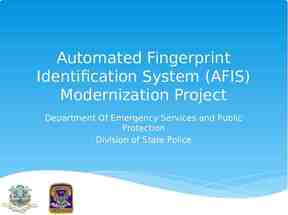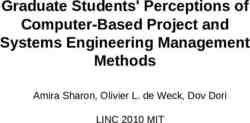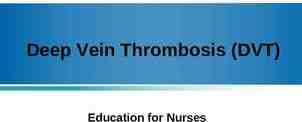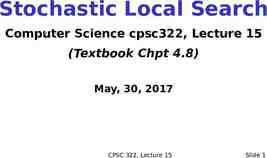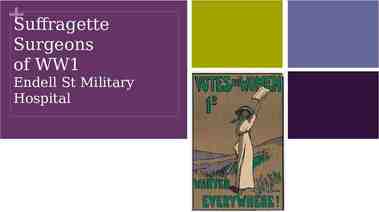Implementation of the 2019 California Arts Standards and
47 Slides6.53 MB

Implementation of the 2019 California Arts Standards and Distance Learning July 2, 2020 Armalyn De La O Region 10 Lead CCSESA Arts Initiative Courtney Sawada, Director Southern Counties California Arts Project California Department of Education Tony Thurmond, State Superintendent of Public Instruction

VAPA REVISION PROJECT MILESTONES

CCSESA & TCAP: Supporting Arts Educators in California California County Superintendents Educational Services Association Statewide Arts Initiative Represents 58 County Offices of Education Provides arts education service and support to schools and districts Utilizes regional model to design and implement programs and educational practices Regional Arts Leads – represent all 11 service regions of the state A California Subject Matter Project Five regional sites, with Regional Site Directors and Teachers Leaders, and a statewide leadership and development center serving all areas of the state Utilizes a collaborative regional and statewide approach to provide support to and leadership development in arts education for educators, schools, and districts Brings K–12 and university educators together in communities of practice to promote high-quality teaching, leadership, and educational equity in the arts.

CCSESA & TCAP Regions Region 1: Humboldt Region 2: Butte Region 3: Sacramento Region 4: Alameda Region 5: Santa Clara Region 6: Stanislaus Region 7: Fresno & Tulare Region 8: Ventura Region 9: San Diego Region 10: San Bernardino Region 11: Los Angeles The California Arts Project Statewide Leadership and Learning Center, CSU San Bernardino Northern California Arts Project, CSU Chico Bay Area California Arts Project, San Jose State University Los Angeles Basin California Arts Project, Cal State Los Angeles RIMS California Arts Project, CSU San Bernardino Southern Counties California Arts Project, San Diego State University

CONTEXTS FOR ARTS LEARNING IN SCHOOL Arts education instruction in K–12 (per Education Code sections 51210 and 51220) develops “aesthetic appreciation and the skills of creative expression.” Career technical education standards for arts media and entertainment integrate career, technical, and academic education so students can emerge from school ready to pursue their career and college goals. Preschool instruction focuses on artistic play, process, and arts learning in the context of child development. Integrated arts instruction provides opportunities to connect arts and other content area learning.

THE ARTS AS MEANS TO WELLBEING Learning in the arts as creators, performers, and audience members (responders) develops mental, physical, and emotional wellbeing. Long Description

INSPIRATIONAL YES!

Overview of 2019 Arts Standards Focus on Process

The ultimate goal of the PK–12 California Arts Standards is to develop artistic literacy. The Goal: Artistic Literacy Artistic Literacy involves recognizing and utilizing: Arts as Communication Arts as Creative Personal Realization Arts as Culture, History, & Connectors Arts as a Means to Wellbeing Arts as Community Engagement Arts as Profession

Artistic Processes & Process Components

Process Components: Creating

Process Components: Presenting/Performing/Producing

Process Components: Responding

Process Components: Connecting

Shared Artistic Creating Processes Performing/ Presenting/ Responding Connecting Producing Conceiving and Realizing artistic developing new ideas and work artistic ideas through and work. interpretation and presentation. Understanding and evaluating how the arts convey meaning. Relating artistic ideas and work with personal meaning and external context.

Shared Artistic Processes Creating Shared 1. Generate and conceptualize artistic ideas and work. 2. Organize and develop artistic ideas and work. 3. Refine and complete artistic work. Anchor Standards Performing/ Presenting/ Producing Responding 4. Analyze, 7. Perceive and interpret, and analyze artistic select artistic work work. for presentation. 8. Interpret intent 5. Develop and and meaning in refine artistic work artistic work. for presentation. 9. Apply criteria 6. Convey meaning to evaluate through the artistic work. presentation of artistic work. Connecting 10. Synthesize and relate knowledge and personal experiences to make art. 11. Relate artistic ideas and works with societal, cultural and historical context to deepen understanding.

Creating Performing/ Presenting/ Producing 6.TH:Cr1.1 5.DA:Pr5 Explore a scripted a. Recall and execute a or improvised series of dance phrases character by using technical dance imagining the given skills (e.g. alignment, circumstances in a coordination, balance, drama/theatre core support, clarity of work. movement). Prof.VA:Pr4 Analyze, select and curate artifacts and/or artworks for presentation and preservation. Responding Acc.MU:E.Re7.1 Apply criteria to select music for a variety of purposes, justifying choices citing knowledge of the music and the specified purpose and context. Connecting 8.MA:Cn11 Analyze and responsibly interact with media arts tools, environments, legal and technological contexts, considering ethics, media literacy, social media, and virtual worlds. Discipline-specific Performance Standards

support inquiry within and across disciplines Enduring Understandings (EUs) and Essential Questions (EQs ) What’s New: Inquiry Supports

What’s new? 2001 Content Standards Identify the specific content to teach at each grade level. 2019 Performance Standards Identify what students should be able to do or demonstrate at each grade level. It is the teacher’s discipline expertise that determines the most appropriate content to teach in order for students to achieve the standard

Performance Standards

Distance Learning for Arts Education Lessons from the Field: There are perks who knew?

Distance Learning Perks for Teachers Opportunity to heighten conversation in districts to address inequities Lack of technology in many arts classrooms Access to the “traditional” materials Rethinking Curriculum Authentic learning opportunities in “real-life” contexts Professional networking and Social Media platforms

Distance Learning Perks for Students More flexibility to accommodate students’ time Student centered – student choice – student agency to direct learning Having a tool/device that they didn’t have access to before Connection/access to the teacher – more individual interaction Heightened attention to social and emotional needs from teachers

Voices from the Field Nicole Robinson, Dance Educator Zack Pitt-Smith, Music Educator Kimberly Ramos, Visual Art Educator

Nicole Robinson, Dance Educator (1) Discoveries Reinventing Choreographic Ideas and Uses of Space Rethinking Dancing Together Redefining Collaboration Refined Artistic Processes and Design (creating and performing) Focused attention on choreographic process, revision and performance for the camera

Video Clip available to view at https://www.youtube.com/watch?v T2U-lgJdABw&feature youtu.be this clip begins at 24:17

Nicole Robinson, Dance Educator (2) Discoveries Reinventing Choreographic Ideas and Uses of Space Rethinking Dancing Together Redefining Collaboration Refined Artistic Processes and Design (creating and performing) Focused attention on choreographic process, revision and performance for the camera New Tools and Software

Nicole Robinson, Dance Educator (3) Challenges Difficulties recreating the studio space at home Unrealistic student expectations (Teacher) Unrealistic teacher expectations (District) Understanding teacher privilege Student engagement Delays and stalling in technology during live studio classes

Zachary Pitt-Smith, Music Educator

Video Clip of Zachary PittSmith available to view at https://www.youtube.com/watch?v T2U-lgJdABw&feature youtu.be this clip begins at 34:49

Kimberly Ramos, Visual Arts Educator (1) What did I discover? Challenges Lesson design and planning Artistic Processes: Creating, Presenting, Responding, Connecting

Imaginary Friend

Getty Challenge

Kimberly Ramos, Visual Arts Educator (2) What did I discover? Challenges Lesson design and planning Artistic Processes: creating, presenting, responding, connecting How I evolved

Reflections from arts teachers doing synchronous and asynchronous teaching All students need to have similar platforms. Teachers need a student account so we can experience our lessons the same way our students do. Plan on 6 hours of prep for each hour of content. We need to teach [and model] digital responsibility – not just citizenship – basics like: Check email daily. Actually respond to email. Proofread before clicking ”send.” Read the directions.

Considerations for moving forward (1) Enabling student choice is effective and critical. Balance flexibility and understanding with accountability and expectations. Co-teaching/teaching collaboratively is useful/needed to support synchronous online learning. Sufficient practice (rehearsal) of instruction enables fluid and wellimplemented instruction. Students need to be taught how to use a tool, before actually using the tool – demo videos and tutorials are needed.

Considerations for moving forward (2) Establishing relationships and systems that enable timely constructive, critical feedback in conjunction with positive feedback and encouragement Preventing and responding to feelings of isolation – especially in traditional ensemble settings that may now be individual practice and work Experimentation, reflection, and patience is vital for innovation – we need space to try, augment, and adapt

“The problem isn’t a lack of ideas. The problem is too many ideas. It’s not that we need more training, but rather the time to figure out what’s really effective. This whole Distance Learning thing was really an exercise in crisis management. If we knew now that we would be doing this again in the fall, I could probably create a very successful sequence of lessons. But not knowing what the fall will look like means having to wait to implement anything and risking another semester of crisis teaching.” R. Duckworth, Music Teacher, Colton Joint Union School District

Discipline specific networks and resources to support teachers

The California Arts Project (TCAP) Resources (1) Summer 2020 Upcoming ‘From a Distance’ Virtual Offerings TCAP’s Conversations with California Artists, Creatives, & Educators TCAP’s Latin Music Initiative, summer webinars TCAP’s Arts Standards Webinars Regional and Statewide Arts Education Networks and Communities of Practice New Arts Education Framework Update Customized district or school-based professional learning supporting arts education

The California Arts Project (TCAP) Resources (2) Upcoming 2021 Professional Learning TCAP’s 14th Courageous Creativity Conference TCAP’s Summer of Studios

CCSESA Arts Initiative Resources (1) Resources available at ccsesaarts.org Creativity at the Core Professional Learning Modules: Module 2 focuses on Distance Learning Publications such as Counties on the Move: Arts Education for All Students, and Culturally and Linguistically Responsive Arts Learning in Action Rural Arts Initiative which highlights strategic plans and successes District Spotlights of school districts who are building momentum in arts education Resources, guides, and lessons

CCSESA Arts Initiative Resources (2) Professional Learning State, regional, and county professional learning opportunities, colloquia, conferences, and events Creativity at the Core: Annual summer institute Insider’s Guide to Arts Education Planning

Examples of County Office of Education Support Humboldt COE: Create Humboldt & Arts and Creativity Initiative Fresno COE: Wednesday statewide arts resources posted San Bernardino CSS: SBCSS Fall Arts Virtual Festival in Dance, Media Arts, Music, Theatre, and Visual Arts. Riverside COE: Arts Webinars for teachers and administrators Orange County DOE: disciplinary bimonthly Zoom network meetings San Diego COE: Arts Leadership Community in partnerships with SouthCAP

ADDITIONAL RESOURCES & SUPPORTS Arts Standards Webinar Series produced by CDE https://bit.ly/31mFrVY [Link no longer available] California Art Education Association (CAEA) California Dance Education Association (CDEA) California Educational Theatre Association (CETA ) California Music Educators Association (CMEA)

For questions or to get more information on future webinars, please contact us at: [email protected] Visit our Distance Learning web page at: https://www.cde.ca.gov/ci/cr/dl/index.asp For weekly email updates from the California Department of Education, send a blank email to: [email protected]

LONG DESCRIPTION TEXT Title: Social Emotional Learning Description: The relationships between social and emotional learning (SEL) competencies and contexts are represented by the Collaborative for Academic, Social, and Emotional Learning as a “wheel” which places SEL at the center, or hub, surrounded by five core competencies, self-awareness, self-management, responsible decision-making, relationship skills, and social awareness (represented as “spokes”). Wrapped around the five core competencies are the “where” and “how” SEL can be taught: in classrooms, through SEL curriculum and instruction; in schools, through schoolwide practices and policies; and in homes and communities, through family and community partnerships. Return to Slide

